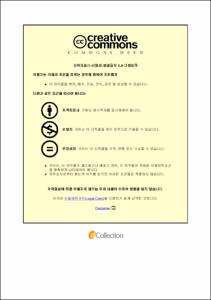캘리그라피의 조형성을 활용한 식품 브랜드 로고타입 디자인 차별화 연구
- Abstract
- Calligraphy logotype has been expanding its area to all brand business fields in the design field for several years, among which it is especially most widely used in field of Korean food brand logotype. Design differentiation strategy has been very important to enhance brand value in the highly competitive food brand industries, and previous studies have shown that the aesthetic impression of design have the greatest influence on consumer preference and purchase intention as a differentiation factor creating great added value. Therefore, the necessity of research on the extraction of formative elements and aesthetic elements of calligraphy has emerged in order to establish objective evaluation criteria and analysis measure to determine the aesthetics of a logotype design created by calligraphy and formative analysis method based on the aesthetics of calligraphy is examined.
The formation has been analyzed mainly with focus on the morphological elements of calligraphy in previous studies. Therefore, this study aimed to analyze the formation of calligraphy in detail including the formative elements in terms of calligraphy, formative elements of strokes and structural elements representing the arrangement of letters designed in terms of typography as analysis criteria. In this study, simple/complexity, balance, emphasis, harmony, and rhythm were selected as aesthetic elements of calligraphy and the formativeness of the food brand logotype created by calligraphy was analyzed using the selected aesthetic elements as a measure.
For this purpose, the important formative elements of calligraphy and the aesthetic elements of design were investigated in this study. A total of 18 elements (protrusions, joins, cutouts, curves, breaks and rolls, line thicknesses, and intensity changes of lines, line organicity, line textures, gradients, typical and atypical, imaging, size combinations of 3, visual flow lines, arrays, regular/ irregular arrangements, font complex, font size complex) were derived as calligraphic formative elements, including important formative elements overlapping at least two of the 26 elements presented in the previous study on the formative elements of calligraphy.
A total of 40 brand logotypes, including 21 brands of listed companies of food, 13 brands of listed companies of beverage 6 brands of listed companies of traditional liquor and 40 types of brand logotypes were selected for research and analyzed by formative elements, structural elements, and aesthetic elements. In order to quantify and objectively measure the aesthetics of calligraphy, semantic differential method was applied for the analysis and the aesthetic formativeness of calligraphy was analyzed in detail through the contradictory elements, the criteria of semantic differential method.
This study has significances in that important aesthetic elements of calligraphy are extracted and refined from the previous studies, the concepts of element are defined and it provided an opportunity to explore the formative analysis method as an aesthetic aspect of calligraphy which was not verified in the previous studies. It can be expected to produce calligraphy logotype that many consumers may prefer by using aesthetic factors as a measure through this study.
Furthermore, a more detailed study on the aesthetic elements that have a significant influence on consumer perception will be needed to specify the formativeness of the logotype that can enhance the brand value. Thorough objectification may be difficult since aesthetic elements are factors that affect purchase intention through subjective perception of quality, but it is expected that empirical research will be conducted as a method to evaluate the objective formative aesthetic sympathized with the public and it is hoped that empirical verification on the findings through statistics can be conducted.
- Issued Date
- 2020
- Awarded Date
- 2020. 2
- Type
- Dissertation
- Publisher
- 부경대학교
- Affiliation
- 부경대학교 대학원
- Department
- 대학원 산업디자인학과
- Advisor
- 홍동식
- Table Of Contents
- Ⅰ. 서 론 1
1. 연구배경과 목적 1
2. 연구범위 및 방법 2
3. 선행연구 5
Ⅱ. 이론적 배경 9
1. 캘리그라피의 이해 9
가. 캘리그라피의 개념 9
나. 캘리그라피의 특징 13
2. 캘리그라피의 조형성 고찰 14
가. 조형성의 이해 14
나. 문자의 조형성 20
다. 한글서체의 조형성 21
라. 캘리그라피의 조형성에 관한 선행연구 26
마. 본 연구의 캘리그라피의 조형 요소 42
바. 캘리그라피의 형태적, 구조적 요소로서의 조형성 47
사. 캘리그라피의 심미적 요소로서의 조형성 64
아. 캘리그라피의 조형적 특징 80
3. 브랜드 로고타입 82
가. 브랜드 로고타입의 개념 및 특성 82
나. 브랜드 로고타입으로서의 캘리그라피 84
Ⅲ. 캘리그라피로 형성된 브랜드 로고타입 사례 분석 87
1. 캘리그라피로 형성된 로고타입의 조형적 분석 기준 87
2. 국내 식품 브랜드의 시장 현황 88
3. 국내 식품 브랜드 로고 디자인 표현 사례 분석 93
가. 국내 식품 브랜드 로고 디자인의 표현 사례 분석 93
나. 국내 식품 브랜드 로고타입 분석결과 133
다. 국내 음료 브랜드 로고타입 분석결과 154
라. 국내 전통주 브랜드 로고타입 분석결과 167
Ⅳ. 결론 173
1. 결론 173
2. 연구한계 및 제언 178
참고 문헌 179
- Degree
- Master
- Files in This Item:
-
-
Download
 캘리그라피의 조형성을 활용한 식품 브랜드 로고타입 디자인 차별화 연구.pdf
기타 데이터 / 11.35 MB / Adobe PDF
캘리그라피의 조형성을 활용한 식품 브랜드 로고타입 디자인 차별화 연구.pdf
기타 데이터 / 11.35 MB / Adobe PDF
-
Items in Repository are protected by copyright, with all rights reserved, unless otherwise indicated.